Many people have shown interest in the history of the pre-Columbine group of people known as the Maya. Their interest isn’t only based on the impressive structures they built all over the South American continent but because of the influence of their culture. While the Mayans may have had several city-states, some in constant war with others, some living in peace with others, their leaders are still among the enigmas that continue to grab people’s attention.
While their civilization is still being uncovered, we cannot deny that their leaders have exerted influence over activities that may have shaped the course of history. Of course, there’s still a lot more to discover about this civilization. Still, its politics and society provide a glimpse of how different governing styles affect the lives of its people.
Lachan Kʼawiil Ajaw Bot
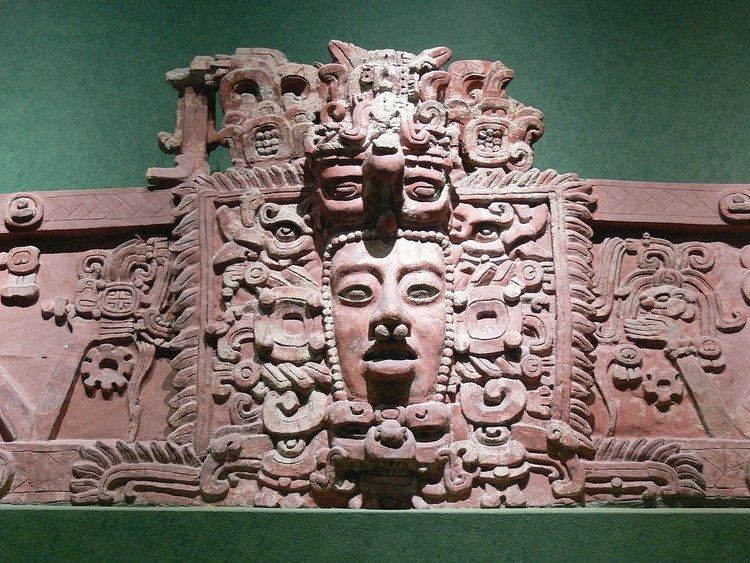
Lachan K’awiil Ajaw Bot is often depicted dressed as a ballplayer. The revered king of La Amelia, an ancient city stronghold near Itzan, in what is present day Peten Department of Guatemala oversaw the erection of monuments on the city site until 807. Among the most important discoveries about the monuments contains the last reference to Mutal, a Petexbatun Kingdom, which may also be referenced as Ti’kal
The king Lachan K’awiil Ajaw Bot is often believed to have been born on June 25, 760. According to the different records, he may have been enthroned as ruler on May 1, 802 at the age of 41.
Lachan K’awiil Ajaw Bot is mentioned on the Hieroglyphic Stairway 1 and on Panel 21 on the site. Sadly, La Amelia was abandoned in the middle of the 9th century AD. Historians surmise that King Lachan K’awiil Ajaw Bot is an avid player of pitz.
Lady of Tikal
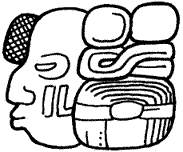
Mayans respected the authority of women leaders, especially if they acceded to the throne based on their accepted traditions. One of the most revered rulers of the Mayan civilization is the Lady of Tikal. According to Stela 23, Lady Tikal came to the throne at the tender age of six on April 19, 511. Archaeologists place her birth on September 1, 504, to K’an Chitam and Lady Tzutz Nik.
She didn’t rule on her own but shared the responsibility with Kaloomte’ Bahlam, whom historians believe became her husband later in life. The Lady of Tikal was the daughter of Chak Tok Ich’aak II, and she was the 19th ruler. Bird Claw succeeded her upon her death. Researchers are still unsure if she died in 527 or 534 because of the incompleteness of the stelas mentioning her history. The term Lady of Tikal also refers to Lady Six Sky of Naranjo.
K’inich Janaab Pakal
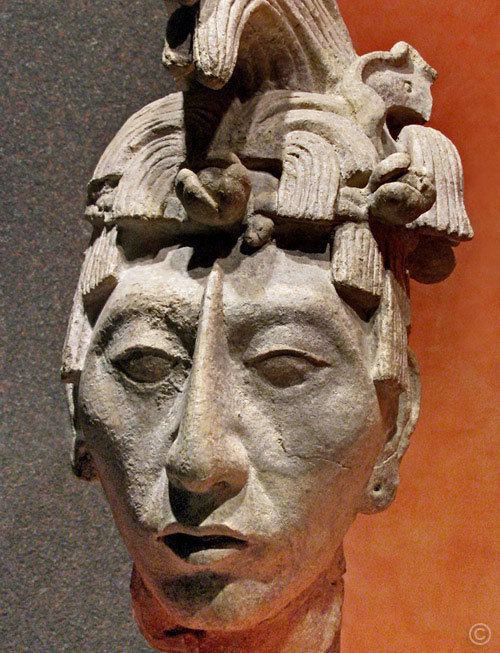
One of the greatest Mayan leaders reigned for 68 years in the city-state of Palenque. He was K’inich Janaab Pakal, also known by the names Pacal, Sun Shield, Pacal the Great and 8 Ahau. According to the surviving stelas, he acceded to the throne in July 615 and ruled the city-state until his death. Under his capable leadership, which has been verified as the fifth-longest regnal period of a sovereign monarch, he was responsible for constructing and extending what is now Palenque’s most notable architectural structures. His sarcophagus lid also has his depiction, which has gained fame in popular culture especially in pseudoarchaeology.
Ancient astronaut believers state that his depiction in the sarcophagus lid is evidence of extraterrestrial influence among Mayan civilization. Erich von Daniken’s Chariot of the Gods claimed that his pose in the lid, similar to Project Mercury astronauts, is incontrovertible proof of extraterrestrials helping this civilization flourish.
Yik’in Chan K’awiil
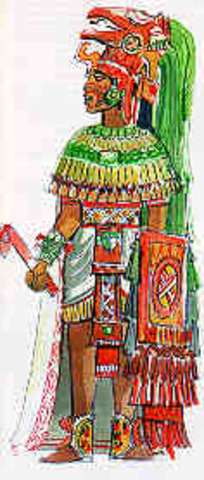
Yik’in Chan K’awiil, known as Ruler B, was the King of Tikal from 734 – 766. He is also known as Yaxkin Caan Chac or Sun Sky Rain and is the son of Lady Twelve Macaw and Jasaw Chan K’awiil I, whom he succeeded in power.
According to reputable Mayan historians, Yi’kin was the 27th ruler in the dynastic succession of the city-state’s rulers and successfully consolidated his father’s gains during his reign. He was quite the expansionist as, during his reign, significant construction continued in the city-state. His wife is Shana’Kin Yaxchel Pacal (Green Jay on the Wall) of Lakamha.
During his reign, he and his forces conquered Calakmul in the year 736 and also two important Calakmul allies, El Peru and Naranjo in 743 and 744 thereby consolidating his power base. Although his final resting place is unknown, archeologists suspect it might be in Tikal Temple IV and VI.
Lady Six Sky

Mayans have distinguished warrior queens, including Lady Six Sky. However, the name is still contentious as scholars have yet to formally agree on the translation of her name. She’s also known as Lady Wac Chanil Ahau, Wak Chanil Ajaw or Lady Wak Chanjalam Lem.
Lady Six Sky is the daughter of Lady B’ulu or Lady B’uluka ’l and B’alai Chan K’awiil of Dos Pilas, although the exact date of her birth is still unknown. Her mother wasn’t her father’s first wife, although she carried the title of ochk’in kalo’mte, which suggested that she had a high rank in Mayan society.
She arrived in Naranjo in 682 to establish a new dynasty. She formed part of the arranged marriage between the cities of Naranjo and Dos Pilas. Historians believe that she agreed to the marriage to inject Naranjo into the Calakmul-Dos Pilas alliance, which met defeat at the hands of Tikal.
Kʼakʼ Tiliw Chan Chaak

K’ak’ Tiliw Chan Chaak was born on January 4, 688, and was a Mayan ruler of the city-state of Naranjo. He was also known by his nickname, Smoking Squirrel, a name bestowed on him before archaeologists deciphered his glyph.
He led Naranjo during an extensive military period against rival city-state Yaxha. However, since the period coincided with his younger years, historians surmise that his mother, Lady Wak Chanil Ajaw, organized such campaigns, most probably because they were rising against her.
He became ruler of Naranjo on May 31, 693, at the tender age of five. During his reign, Naranjo fought and won against smaller polities. However, city-states such as Ucanal, Tikal and Yaxha also suffered consequential defeats.
Upon reaching the right age to properly rule, he became a patron of the arts. His other name, Sak Chuwen, means Pure Artisan. He took as his wife Ix Unen B’ahlam of Tuubal.
Itzamnaaj Bahlam of Ucanal

Itzamnaaj Bahlam was a Mayan king of the Ucanal city-state in present-day Guatemala in the late seventh century.
He faced defeat at the hands of K’ak’ Tiliw Chan Chaak, who was but ten years old at the time. He had his city razed to the ground on September 4, 698. His depiction in Stela 22 shows him nearly nude except for his loincloth with hands tied and him supplicating to the Naranjo ruler. Researchers deciphered the date on the stela as January 26, 702, which suggested that he may have been held as a captive for the better part of three years.
He held the title of K’an Witznal Ajaw, representative of the kings of Ucanal. A vase painted in the Naranjo style also held connections which may have indicated a strained relationship between the city-states, or it could have been an offering of a compliant vassal after his defeat.
Kan Bahlam I

Kan Bahlam I is considered the first Mayan leader to use the appellation K’inich, although he did so inconsistently. The term means “the great sun” in the Mayan language and appealed to the pantheon of gods and goddesses that they worshipped.
Kan Bahlam I was also known as Chan Bahlum I and was born on September 18, 524, to K’an Joy Chitam I, although historians are still proving it. He acceded to the throne at age 47 on April 6, 572, preceding his brother Ahkal Mo Nhab II. He ruled the city-state of Palenque until his death on February 1, 583, at the age of 58.
His name Kan Bahlam I is translated as “Radiant Snake Jaguar”. During his reign, they completed what is now popularly known as the Cross Group Temples of Palenque, which aside from the Temple of Inscriptions, are among the three most prominent structures in Palenque.
Lady K’atun Ajaw of Namaan
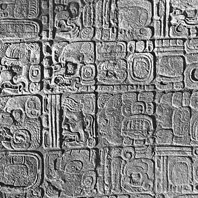
The Lady K’atun Ajaw of Namaan was born on July 5, 674. She was queen and primary consort of a city-state in present-day Guatemala, called K’inich Yo’nal Ahk II of Piedras Negras.
Historians surmise that her name in ancient Ch’olan may be Ix Winik Haab’ Ajaw, although scholars typically call her by her more popular name, Lady K’atun Ajaw. She came from the city called Namaan or the currently La Florida, and married the ruler in a 5-day ceremony in 686 at the age of 12. Her husband’s father died during the ceremony leaving K’ininch Yo’nal Ahk to accede to the throne. As seen in several conch shells, Lady K’atun Ajaw was mentored by Lady Ah B’ikal during the wedding ceremony and beyond. Therefore, historians surmise that Lady Ah B’ikal may have been her mother.
She sired a daughter for Yo’nal Ahk on March 19, 708 CE, named Lady Ju’ntan Ahk.
Chan Chak Kʼakʼnal Ajaw
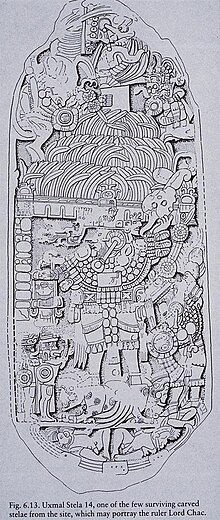
K’ahk’ Pulaj Chan Chaahk is the only known ruler of the Pre-Columbian city-state of Uxmal. He ruled in the 10th century and was also known as Lord Chac before historians completely deciphered his name glyphs.
Although very little is known about him, archaeologists state that he acceded to the throne at the end of the ninth century and ruled the area probably between 890-910 AD. During his reign, they built the biggest and most impressive buildings in the Uxmal territory, including the so-called Nunnery Quadrangle and the Governor’s Palace. According to inscriptions found at a large ballcourt (probably pix) in Uxmal, the building was dedicated in 901 during the reign of Lord Chac.
Archaeologists continue to disagree about his name. Some say that he is the only king with such a name, while another group insists that there may have been more rulers who carried the name of Lord Chac.